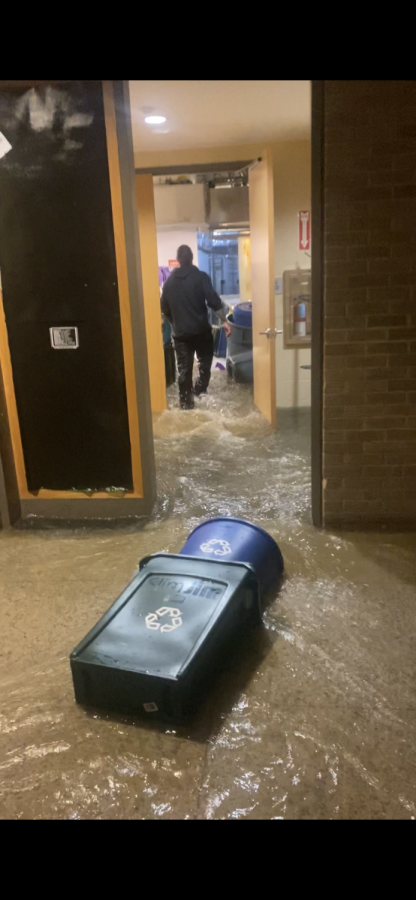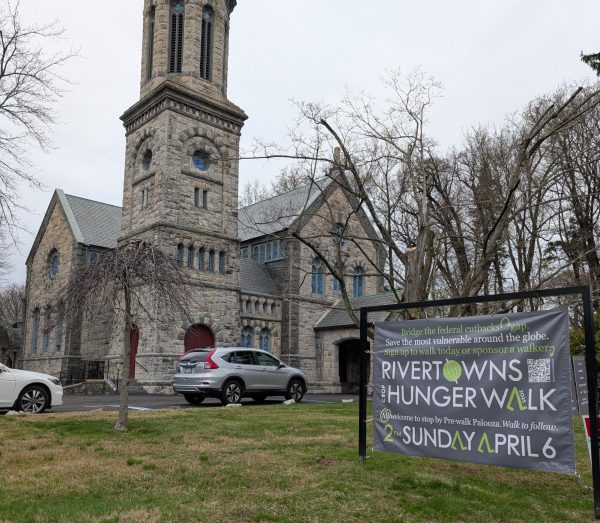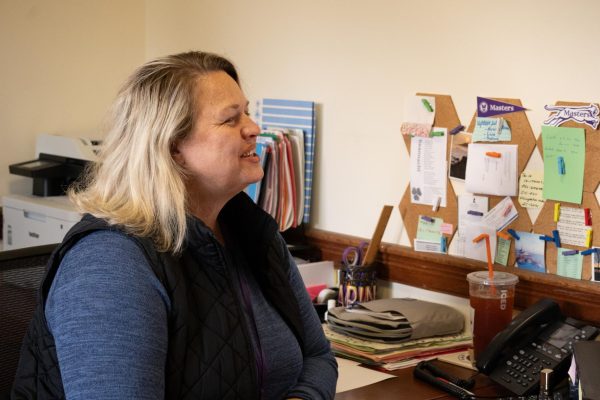Hurricane Ida storms through the Fonseca Center
On the night of Sept. 1, the first floor of the Fonseca Center suffered severe flooding, damaging the fencing and dance studios, various classrooms and faculty offices. Since then, the Maintenance Department has been clearing and repairing the damage.
On the night of Sept. 1, as the entirety of the East Coast was hit with Hurricane Ida, the buildings at The Masters School attempted to hold the rain out, and while some were successful, others were not. The main athletic buildings at Masters, the Fonseca Athletic Center(FC) and Strayer Hall, suffered severe flooding on their bottom floors. The bottom floor of the FC is home to the gym, fencing and dance studios, various classrooms and faculty offices in addition to training rooms. In Strayer Hall, there is a gym and various performing arts studios. All of these spaces suffered fairly extensive damage. When these spaces flooded, those who work in them were forced to survey all items as quickly as possible to see which could be salvaged and which had to be thrown out.
Upper School Dance Teacher and Director of Masters’ Dance Company Shell Benjamin came in on Sept. 2, the morning after, to gather all of the belongings she could.
Benjamin said, “Everything was drenched. Things had moved around and were out of place and I had to go through and sort costumes, posters, documentation, music, books, dresses, tutus, and these were all things that could never be replaced.”
The Dance Company had spaces in the Fonseca Center as well as in Strayer Hall which were both flooded on Sep. 1. As such, Benjamin packed up and moved most of the remaining items into the Experimental Theater on the top floor of the Fonseca Center, converting it into a temporary dance studio with portable mirrors and portable bars.
Dance Company was not the only group at Masters affected by the flooding, as the water also damaged many of the athletic faculty offices. Logan Condon, director of athletics, experienced extensive flooding in his office. Although Condon was forced to move into a new temporary space in McCormack dorm, Condon first thought about the students and how this would affect them.
Condon said, “Because our team’s seasons were about to begin, we wanted to make sure that our athletes could move forward and have everything that they need; that was my first priority.”
Even spaces in the Fonseca Center that were built to withstand water were impacted, such as the training room on the first floor of the building. Kalya Medina, the head athletic trainer was also forced to leave this area for a number of days.
Medina said, “The drains and tile floor meant I didn’t have much damage, but I had to leave due to the air quality so I packed up my stuff and turned my golf cart into a mobile office for the time being.”
Although this flooding took the school by surprise, the faculty and staff are determined to make the most of this experience.
Benjamin said, “We can’t allow ourselves to be defeated just because something didn’t go as planned. We need to focus on solutions instead of dwelling on our problems so we can look forward and make the most of the future.”
Craig Dunne, the Head of Engineering and Maintenance said that his team is working tirelessly to get all spaces cleared of debris and back to normal by Christmas. The hope is that by this time, all faculty and staff will be able to return to their spaces.

Sabrina Wolfson ‘22 is a lead opinion editor. After living in California for 13 years, she moved to New York for high school. In her sophomore year,...







